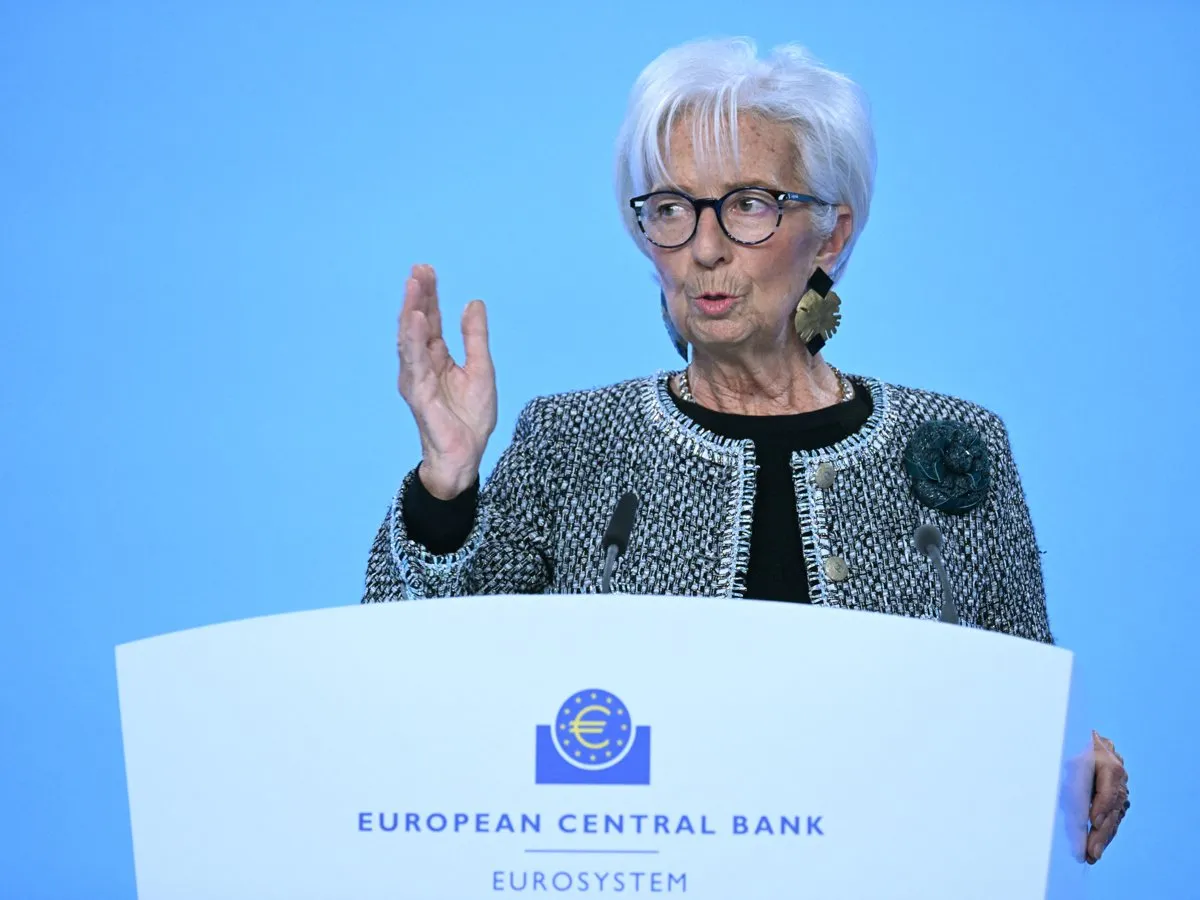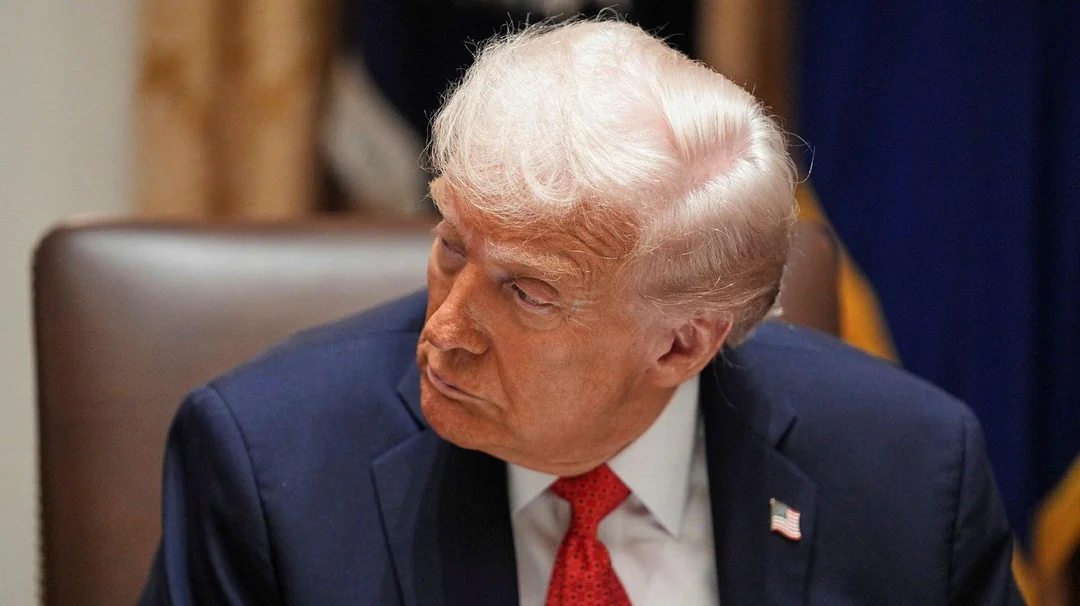European Central Bank (ECB) President Christine Lagarde warned yesterday that the long-standing global economic order anchored by the US dollar is “fracturing,” and she called for concerted EU efforts to elevate the euro into a genuine alternative reserve currency. Speaking at the Hertie School in Berlin, Lagarde argued that multilateral cooperation is giving way to “zero-sum thinking” and protectionism, a trend that not only threatens world trade but also risks Europe’s economic security. She outlined a three-point roadmap—stronger financial infrastructure, deeper capital markets, and robust rule-of-law and security frameworks—that would enable the euro to “earn” its place on the global stage (European Central Bank, Reuters).
“Fracturing” Dollar-Centric Order
Over the past 80 years, the US dollar’s dominance—rooted in post-World War II Bretton Woods arrangements—has underpinned trade growth and financial integration. Under a rules-based system led by Washington, global trade boomed, and cross-border finance expanded dramatically. Yet, rising unilateralism, trade disputes, and erratic US policymaking have unsettled this order.
- Trade tensions: The specter of broad US tariffs on steel, aluminum, and other imports—from partners including the EU and China—has stoked fears of retaliatory measures, fragmenting supply chains and dampening investor sentiment. The World Trade Organization estimates global merchandise trade growth fell to 1.2 percent in 2024—its slowest pace since the financial crisis of 2008 (European Central Bank).
- Protectionism rising: According to a recent Peterson Institute report, the number of active trade-restrictive measures worldwide rose by 15 percent between 2023 and 2024, underscoring growing preferences for bilateral power plays over multilateral accords.
Dollar’s Waning Share of Reserves
Even as global reserves remain heavily dollar-denominated, shifts are afoot:
- The IMF’s COFER data show that the dollar’s share of allocated foreign-exchange reserves ticked up to 57.8 percent in Q4 2024—an increase from 57.3 percent in Q3—but remains near multi-decade lows (IMF Data, Reuters).
- By contrast, the euro’s share has hovered around 19.8 percent, little changed in recent years, despite Europe’s push for greater financial integration.
- Nontraditional currencies—such as the Chinese renminbi (2.18 percent) and the Canadian dollar (2.77 percent)—have seen modest gains, reflecting broader diversification trends.
Why Europe Needs a “Global Euro Moment”
Lagarde framed three pillars for bolstering the euro’s international role, each addressing core deficiencies in the EU’s current architecture.
Deep, Liquid Capital Markets
A truly global currency requires a richly liquid market of “safe assets” in which investors trust they can park capital without undue credit or liquidity risk. Today, the euro-area bond market is fragmented across national lines, with issuance sizes, credit ratings, and market practices varying widely.
- Capital Markets Union (CMU): Launched in 2015, the CMU aimed to harmonize EU capital rules, but progress has lagged. Just 18 percent of euro-area bond issuance is currently classified as “pan-European,” compared to over 60 percent in the US federal market (European Central Bank).
- Safe asset proposals: Joint EU-level bonds—whether dubbed “European Safe Bonds” (ESBies) or sovereign-backed securities—have repeatedly stalled over concerns about shared fiscal liability, especially in fiscally conservative member states like Germany and the Netherlands.
Strong Geopolitical and Security Foundations
Investors do not allocate central-bank FX reserves on the basis of economic fundamentals alone; they also seek geopolitical reliability and security assurances. The US dollar benefits from the “full faith and credit” of the world’s largest military power. Lagarde stressed that for the euro to compete, the EU must:
- Underpin trade with defense: Greater joint financing of defense capabilities and enhanced interoperability among EU armies.
- Forge security alliances: Strengthen NATO ties while deepening EU strategic autonomy, such as in cybersecurity and supply-chain resilience.
Robust Legal and Institutional Frameworks
Long-term confidence in any reserve currency rests on transparent rule-of-law, predictable regulation, and institutional credibility. Lagarde highlighted the need to:
- Complete the Single Market: Eliminate remaining barriers in services, digital finance, and cross-border insolvency.
- Enforce governance standards: Strengthen EU agencies’ authority to oversee markets and curb fragmentation.
- Defend judicial independence: Ensure all member states uphold consistent legal protections, a precondition for investor trust.
Market Reaction and Investor Sentiment
Lagarde’s speech came as markets have already begun trimming dollar exposure amid US policy unpredictability:
- FX flows: According to Bank for International Settlements data, the US dollar index fell by 4 percent between January and May 2025, while gold saw inflows equivalent to US$25 billion in central-bank purchases.
- Euro adoption: Despite talk of a “global euro moment,” the euro’s share of global payments has stagnated at around 38 percent, well behind the dollar’s 45 percent but ahead of the RMB’s 3 percent in cross-border invoicing (Taipei Times).
- Bond markets: Yields on benchmark 10-year German Bunds traded at 1.45 percent—close to a two-year high—reflecting both investor confidence in euro-area stability and anticipation of ECB rate hikes to curb inflation.
Analysts at Goldman Sachs observe that while the euro lacks a “home-grown” liquid market akin to US Treasuries, developments such as increasing EU-level bond issuance and the prospective digital euro could help bridge the gap (OMFIF, European Central Bank).
The Digital Euro: A Game Changer?
Amid the euro’s reserve-currency bid, the ECB has accelerated work on a central-bank digital currency (CBDC)—the so-called “digital euro.” A digital euro could:
- Enhance cross-border payments: Instant settlement across the bloc, reducing reliance on correspondent-bank networks dominated by dollar rails.
- Improve financial inclusion: Offering cost-effective, secure e-payments for households and SMEs across member states.
- Boost transparency: Enabling traceable, programmable money that can support anti-money-laundering efforts and monetary-policy transmission.
A June 2025 ECB report indicated that pilot testing could begin in 2026, with a potential launch by 2028. If widely adopted, a digital euro—backed by the ECB—could become a ready-made “safe instrument” for international investors, reinforcing the euro’s global stature (OMFIF).
Risks and Roadblocks
Despite the vision, formidable challenges remain:
| Challenge | Details |
| Fiscal integration resistance | Germany and other frugal states have balked at joint borrowing, fearing fiscal transfers. Recent debates over “Eurobonds” underscore political fissures on shared liability. |
| Regulatory fragmentation | Divergent national regimes for bank resolution, insolvency, and retail-market licensing impede CMU progress. |
| Global competition | The US dollar retains unmatched liquidity—US$23 trillion in outstanding Treasuries versus ~US$7 trillion in euro-area government debt—making it hard for the euro to displace entrenched portfolios. |
| Technological uncertainty | CBDC implementation faces hurdles around privacy safeguards, cybersecurity, and interoperability with private-sector stablecoins, potentially slowing the digital euro’s roll-out. |
| Geopolitical headwinds | Worsening US-China rivalry could fragment markets further; Europe must navigate sanctions regimes and ensure its financial architecture remains resilient to unilateral restrictions on dollar-denominated assets. |
Turning Vision into Reality
To capitalize on current momentum, Lagarde laid out actionable next steps:
- Fast-track CMU reforms: Prioritize the removal of withholding-tax barriers, harmonize prospectus rules, and standardize ESG-reporting frameworks to attract sustainable-finance capital.
- Launch joint bonds: Pilot a Euro Community Bond with limited joint liability to test investor appetite and political feasibility.
- Digital euro pilots: Expand retail trials across multiple member states, ensuring robust privacy and resilience standards.
- Defense financing: Commit to an initial €50 billion EU-level defense bond to fund rapid-deployment capabilities—symbolizing the “security guarantee” behind the euro.
- Investor outreach: Establish an ECB-sponsored “Euro Reserve Forum” with central banks, sovereign-wealth funds, and institutional investors to showcase new euro-denominated instruments.
The Stakes for Europe
For the eurozone’s 350 million citizens, a stronger euro promises tangible benefits:
- Lower borrowing costs: EU member-state yields could compress by up to 30 basis points if euro-safe assets gain traction, saving governments billions in debt servicing.
- Reduced exchange-rate risk: Firms and consumers would face lower currency volatility, supporting investment and consumption planning.
- Strategic autonomy: A credible alternative to the dollar diminishes Europe’s vulnerability to sanctions and foreign-policy coercion.
- Enhanced cohesion: Greater fiscal and financial integration would buttress the EU project, fostering solidarity across member states.
Yet, the converse is also true: failure to seize this moment risks deeper fragmentation, higher financing costs, and diminished leverage in a multipolar world where economic blocs vie for influence.
Ready to take your career to the next level? Join our dynamic courses: ACCA, HESI A2, ATI TEAS 7 , HESI EXIT , NCLEX – RN and NCLEX – PN, Financial Literacy!🌟 Dive into a world of opportunities and empower yourself for success. Explore more at Serrari Ed and start your exciting journey today! ✨
Photo source: Google
By: Montel Kamau
Serrari Financial Analyst
27th May, 2025
Article, Financial and News Disclaimer
The Value of a Financial Advisor
While this article offers valuable insights, it is essential to recognize that personal finance can be highly complex and unique to each individual. A financial advisor provides professional expertise and personalized guidance to help you make well-informed decisions tailored to your specific circumstances and goals.
Beyond offering knowledge, a financial advisor serves as a trusted partner to help you stay disciplined, avoid common pitfalls, and remain focused on your long-term objectives. Their perspective and experience can complement your own efforts, enhancing your financial well-being and ensuring a more confident approach to managing your finances.
Disclaimer: This article is for informational purposes only and does not constitute financial advice. Readers are encouraged to consult a licensed financial advisor to obtain guidance specific to their financial situation.
Article and News Disclaimer
The information provided on www.serrarigroup.com is for general informational purposes only. While we strive to keep the information up to date and accurate, we make no representations or warranties of any kind, express or implied, about the completeness, accuracy, reliability, suitability, or availability with respect to the website or the information, products, services, or related graphics contained on the website for any purpose. Any reliance you place on such information is therefore strictly at your own risk.
www.serrarigroup.com is not responsible for any errors or omissions, or for the results obtained from the use of this information. All information on the website is provided on an as-is basis, with no guarantee of completeness, accuracy, timeliness, or of the results obtained from the use of this information, and without warranty of any kind, express or implied, including but not limited to warranties of performance, merchantability, and fitness for a particular purpose.
In no event will www.serrarigroup.com be liable to you or anyone else for any decision made or action taken in reliance on the information provided on the website or for any consequential, special, or similar damages, even if advised of the possibility of such damages.
The articles, news, and information presented on www.serrarigroup.com reflect the opinions of the respective authors and contributors and do not necessarily represent the views of the website or its management. Any views or opinions expressed are solely those of the individual authors and do not represent the website's views or opinions as a whole.
The content on www.serrarigroup.com may include links to external websites, which are provided for convenience and informational purposes only. We have no control over the nature, content, and availability of those sites. The inclusion of any links does not necessarily imply a recommendation or endorsement of the views expressed within them.
Every effort is made to keep the website up and running smoothly. However, www.serrarigroup.com takes no responsibility for, and will not be liable for, the website being temporarily unavailable due to technical issues beyond our control.
Please note that laws, regulations, and information can change rapidly, and we advise you to conduct further research and seek professional advice when necessary.
By using www.serrarigroup.com, you agree to this disclaimer and its terms. If you do not agree with this disclaimer, please do not use the website.
www.serrarigroup.com, reserves the right to update, modify, or remove any part of this disclaimer without prior notice. It is your responsibility to review this disclaimer periodically for changes.
Serrari Group 2025












